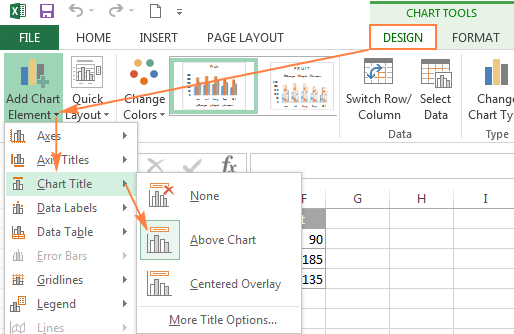
/LegendGraph-5bd8ca40c9e77c00516ceec0.jpg)
To rename a series I right click on the chart, chose 'Select Data'.
Excel rename series in legend pro#
I paid AU$900 for the pro version of Office - this behaviour doesn't seem very "pro" to me. Can you share the *exact* sequence of steps you use, the name you enter, and how you enter it? So what is the point of being able to change the series order in the 'Select Data' dialogue? How do I change the legend order then?Īs far as the series name problem goes, I don't know what the problem is. In the Select Data Source dialog box, under Legend Entries (Series), select the data series, and click Edit. If it the latter, it just could be an Excel limitation.įor example, if you have a combined line and column chart, Excel insists on putting one kind of chart before the other.īut this wouldn't explain why I can do this with certain files and not others - the charts are all identically created in each file.Īnd, AFAIK, it has never been possible to have the legend show the series in a sequence other than the plotted sequence. Right-click the chart with the data series you want to rename, and click Select Data. In the Series name box, type the name you want to use. In the Select Data Source dialog box, under Legend Entries ( Series ), select the data series, and click Edit. And now look at the following image.I don't know if you can make the desired changes with one chart and not do the same with the same kind of chart or a different kind of chart. Right-click the chart with the data series you want to rename, and click Select Data. Let’s check the whole worksheet with a new value in cell C8 (input value 7%). Normally I would go to select data and rename the series, but because of how I received the plot I do not have access to the underlying data and it will not allow this option. The legend in the plot is incorrectly labelled which looks unprofessional. instead of using Code.PickColor( FieldsResultSort.Value), you should use this expression that uses the First() aggregate: Code.PickColor(First(FieldsResultSort. It seems this plot was created in excel and copied into word keeping source formatting. Also, is a series grouping present in the chart In that case you have to make sure that e.g.

C18: =”USA (“&TEXT(C5,”0.0%”) &” annual growth)” and C19: = “China (“&TEXT(C8,”0.0%”) &” annual growth)”. The legend color always depends on the color of the first datapoint in a chart series. Other two formulas are in cells C18 and C19.TEXT function returns the value of cell C14 in General format. If C14 is none (it means there is no 1 in the range D10: R10), the IF function returns “US stays on top”, otherwise IF function returns “ Chinese GDP to pass US GDP in Year “&TEXT(C14,”0”)”. Now see the formula in cell C17: =IF (C14=”none”, “US stays on top”, “Chinese GDP to pass US GDP in Year “&TEXT(C14,”0”)).IFERROR function catches that error, and returns “none”. If it does not find any, returns an error. It searches the value 1 in cell range D10: R10, if it finds any, returns the position of 1 in the range. Check the formula in the cell, C14: =IFERROR (MATCH (1, D10: R10, 0),”none”).So after 11 years, China GDP (with 713.3) has crossed the GDP of US (with 692.1). The first time 1 is returned in cell N10. I copied this formula for other cells on the right (up to cell R10). If the value of cell D7 is greater than or equal to the value of cell D4, it will return 1, otherwise 0. Now take a look the formula in cell D10: =IF(D7>=D4,1,0).In the above-mentioned ways, I have also made formulas for ranges D8: R8 and D7: R7.I have copied this formula for other cells on the right (up to cell R4). Click in the 'Series name' box and then click the cell that contains the name for the series. Click in the box for Axis label range and then click the cells that have the years. The values of C4 and D5 are 500 and 3% respectively. Re: How do you change the legend from series to an actual value In the right hand side panel, click Edit. So all the cells are holding the value of 3% in them. Then I have just copied this formula for other cells on the right (up to cell R5). do above for each column and click OK at the end. select the series you want to change (left window Data series)and it should contain Column A, B, ) in the Data range window right > click Name > Click button at right side of Range of names > select a cell (or more) with the name of your column. So it just copies the value of cell C5 and it is 3%. right click > select Data ranges > Tab Data series. 0 is the starting point (year) and 1 is regarded as after one year. From cell C2 to R2, values from 0 to 15 are set.In the Legend Entries, select the data series you want to rename, and click. Let me introduce you to the worksheet data and formulas used in the calculations. On the menu displayed, click Select Data. Read More Introduction to worksheet data and formulas


 0 kommentar(er)
0 kommentar(er)
